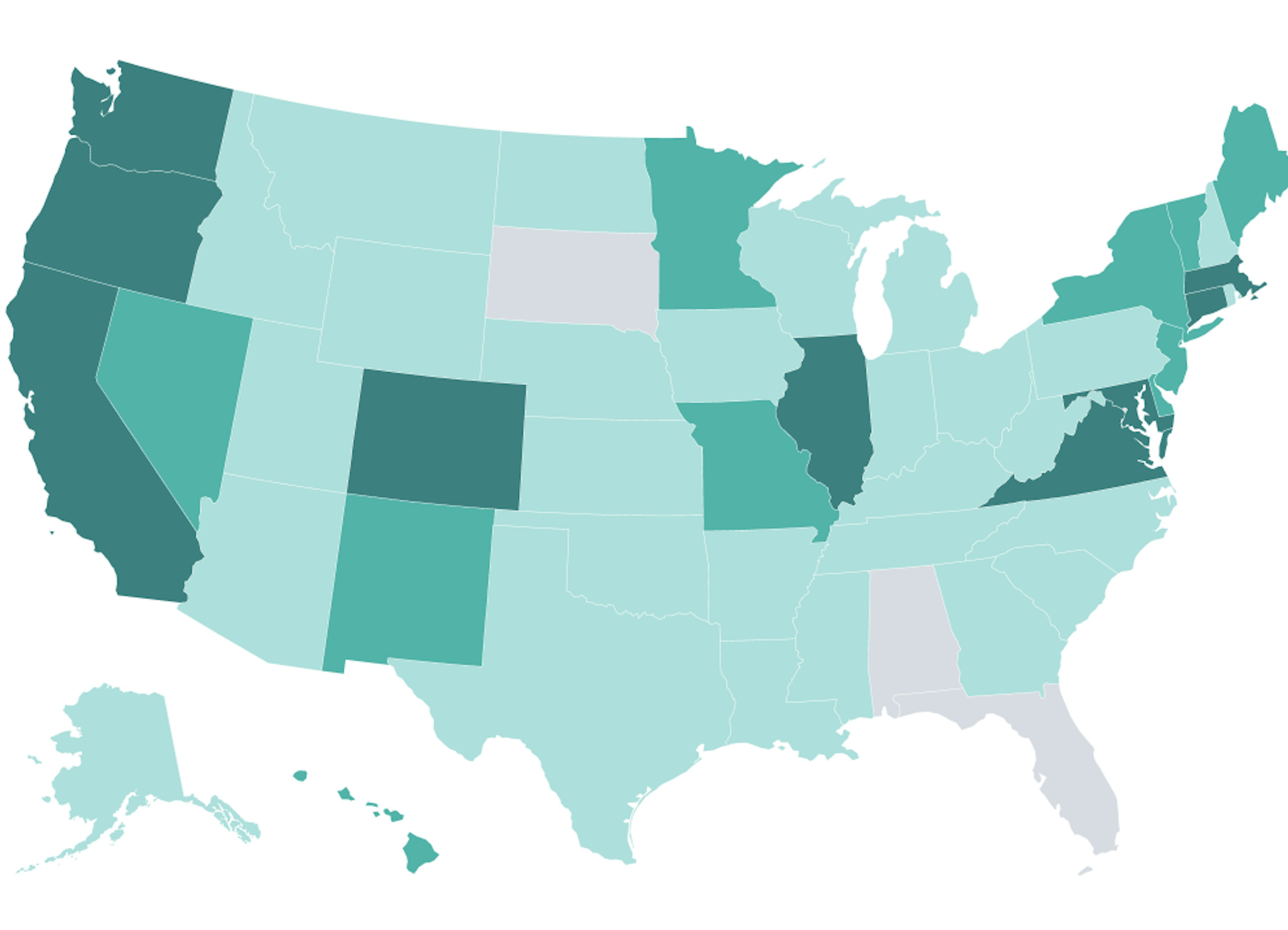Minnesota is the latest state to join the ranks of those already embracing a state-sponsored retirement program. Since 2012, nearly every state has either implemented a state-based retirement savings program, considered legislation, or at least studied program options. As the list of states that have passed legislation grows, it’s more important than ever to know what’s required of your business.
House Bill HF 782, establishing the Minnesota Secure Choice Retirement Program, was introduced by Rep. Jamie Becker-Finn (DFL-Roseville) and signed into law by Governor Tim Walz in May 2023. The law will make it mandatory for covered employers to either enroll employees in the Secure Choice Retirement Program or offer another qualifying retirement plan.
Deadlines for the Minnesota Secure Choice Retirement Program
Currently, no deadlines are associated with Minnesota's state retirement program. According to an update from 2025, the program is not slated to open for enrollment until the first quarter of 2026.
Before the program can start, the board must establish processes for enrolling employees, prepare a budget for the cost of administering and operating the program, and determine:
Contribution rates and an escalation schedule
Withdrawal and distribution options
Default investment fund selections
Once the program begins, the board will be responsible for:
Keeping annual administrative expenses as low as possible
Ensuring that fees incurred by employees don’t exceed a reasonable amount, relative to the fees charged by defined contribution programs of similar size
Preparing clear and concise information for all covered employees about the benefits and risks of participating in the program, enrolling and opting out, establishing a contribution rate, making investment elections, applying for distribution of employee accounts, and making a claim for benefits
Conducting comprehensive employer and worker education and outreach regarding the program.
Overview of the Minnesota Secure Choice Retirement Program
All Minnesota employers with five or more employees that do not currently sponsor a retirement plan will be required to participate. Eligible employees will contribute a portion of their pay into IRAs (individual retirement accounts). The default retirement account will be a Roth IRA (i.e., contributions will be made after taxes), unless the covered employee elects to contribute on a pretax basis.
As written, the program will open on or after January 1, 2025, and roll out in phases, with the last phase opening no later than two years after the opening of the first phase. As we’ve seen with other states, program requirements become mandatory for larger businesses first, and roll out to smaller businesses incrementally. Human Interest will keep you posted on upcoming deadlines as they’re announced.
The design of Minnesota’s state-sponsored retirement plan
Most details of the program’s design will be decided by the board after March of 2024, including establishing default, minimum, and maximum employee contribution rates and an escalation schedule to automatically increase each covered employee's contribution rate annually until the contribution rate is equal to the maximum contribution rate.
Likewise, the board will designate a default investment fund consisting of target date funds, a balanced fund, a capital preservation fund, or some combination that’s diversified to minimize the risk of large losses for employees.
As the bill is currently proposed, employers are not required to contribute to employee retirement plans, but participating employees will be 100 percent vested in their accounts at all times. Additionally, eligible employees will be automatically enrolled by their employer or by a retirement plan administrator employed by the business, and will subsequently have the option to:
Decide whether contributions are pre-tax or after-tax (Roth)
Opt out of participation
Change the rate at which they contribute.
Employees will also be able to direct the investment of their accounts into other investment funds offered through the Minnesota State Board of Investment instead of the default investment chosen by the program’s board of directors. If employees leave their employer before retirement, they can leave the account with the state for distribution at a later date, or elect a distribution in the form of a lump sum or other option to be determined by the board, including lifetime income options.
Potential impacts of the Minnesota Secure Choice Retirement Program
Without more detail, it’s hard to estimate the impacts of Minnesota’s state-sponsored program. However, it’s worth noting that the state attorney general will most likely be able to enforce financial penalties imposed by the board against covered employers who fail to comply with the program’s requirements. The board will provide employers with written warnings for the first year of noncompliance before assessing penalties.
Ultimately, similar state-sponsored programs have expanded the number of workers who have access to and participate in retirement savings plans—although the rate of savings in such plans has, thus far, been relatively low in some states. Using California’s auto-IRA program, CalSavers, as a model, data from the CalSavers Retirement Savings Board showed that the program had both pros and cons.
For example, in 2021, the number of active participants in CalSavers more than doubled to 218,000 total savers who were contributing a total of $187 million However, the average contribution was just $150 per month per participant. In comparison, participants in Human Interest 401(k) plans as of 2021 contributed 8.7% of their gross income, on average.¹ To compare, using the national median wage of $57,200, an 8.7% deferral rate equals $415 per month (or roughly $4,976 annually).²
What’s right for your Minnesota business?
Now is the time to get ahead. For small businesses in Minnesota, it’s time to ensure you understand what’s best for your company. Know that the state-sponsored plan is not your only option. While state-sponsored auto-IRA programs may help increase access to retirement savings, the annual contribution cap of $7,000 in 2025 is lower than the $23,500 limit of 401(k) plans in 2025 (participants 50 years or older can contribute an additional $7,500 in catch-up contributions, while those aged 60-63 can contribute an additional $11,250 in catch-up contributions).
Small businesses can benefit from working with a retirement plan provider like Human Interest that understands small business needs. We can help you implement a retirement plan that supports recruiting and retaining top talent, while taking advantage of available tax breaks and reducing the administrative labor of offering a retirement plan.
Low-cost 401(k) with transparent pricing
Sign up for an affordable and easy-to-manage 401(k).

Article By
Trenton ReedTrenton Reed is the Manager of Content Strategy at Human Interest. He has nearly a decade of experience writing for Fortune 500 and SMB companies across finance, technology, and other verticals.


